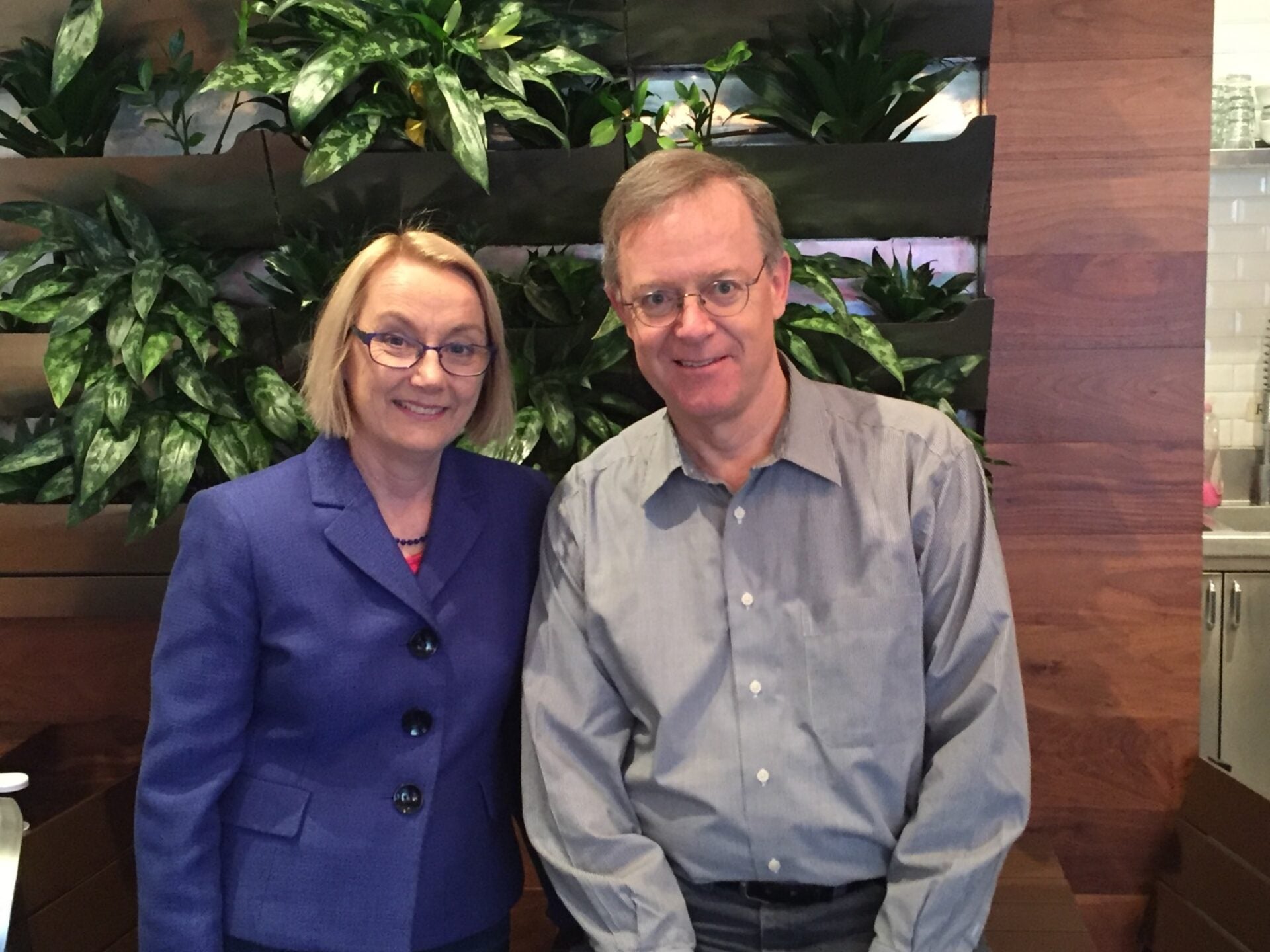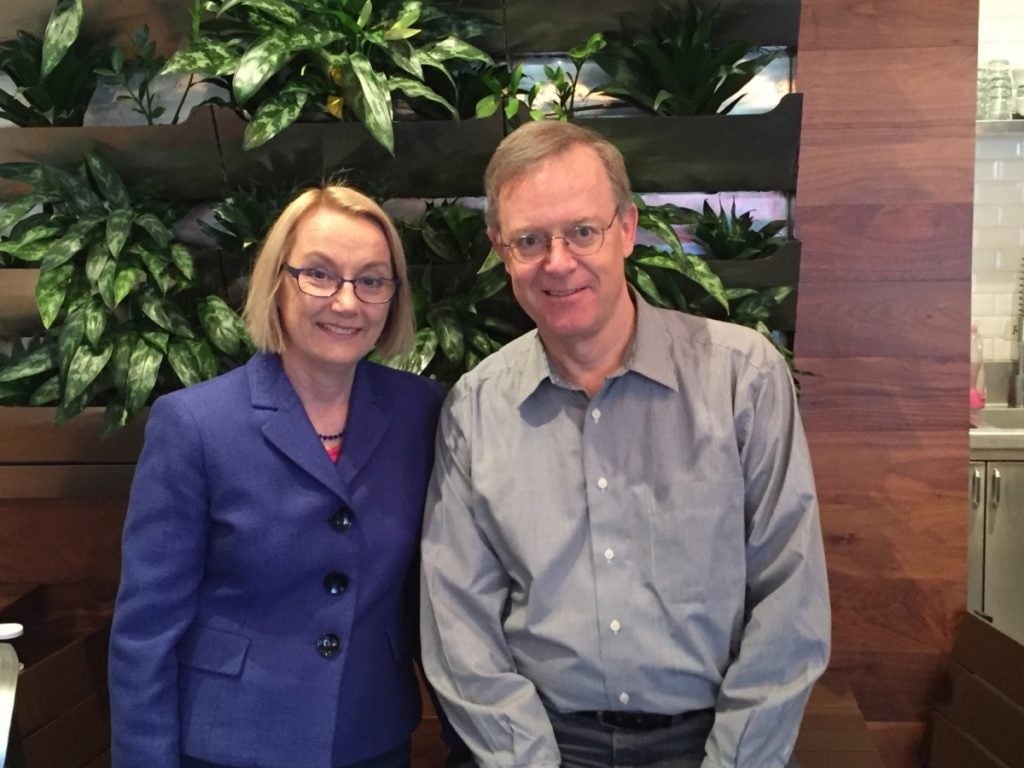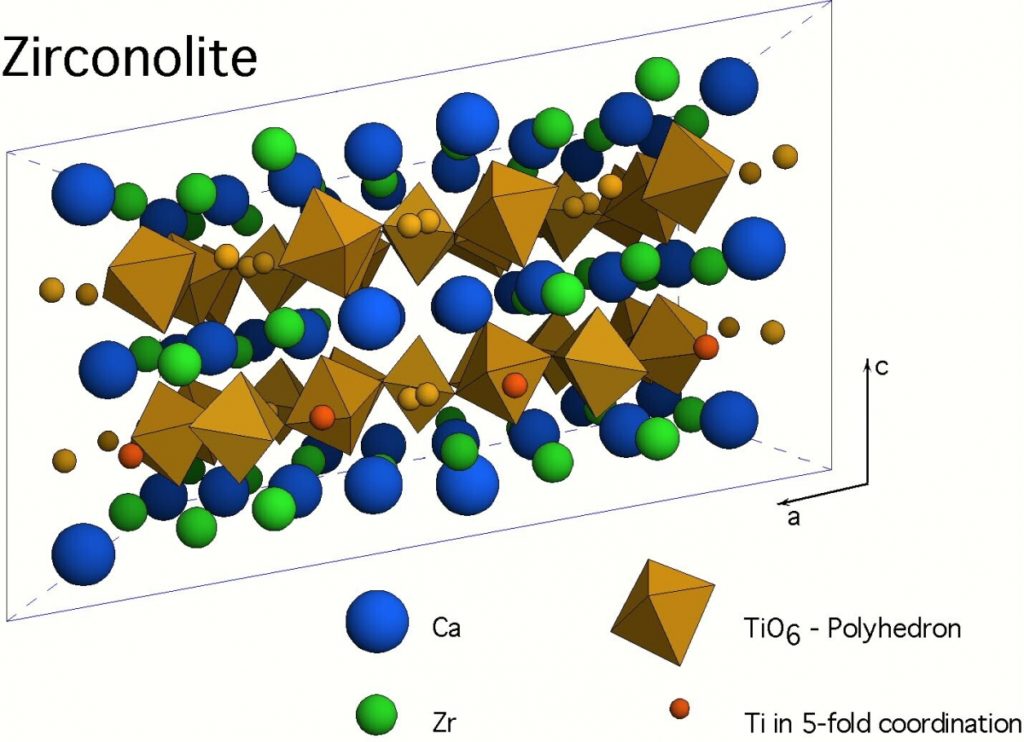
Kleinman Visiting Scholar and Penn Professor Develop Solution for Nuclear Waste Storage

Could a twenty-year collaboration yield a solution to nuclear waste storage that will last millennia?
The question drives the work of Katherine Smith, a materials scientist who has served as a scientific attaché for the Australian government in Vienna and Washington D.C., and was a recent visiting scholar at the Kleinman Center in October. Smith has been working for more than two decades with Professor Reto Gieré, Chair of Penn’s Department of Earth and Environmental Science, to develop materials that will permanently and safely protect waste from nuclear power generation and dismantled nuclear weapons.
“That was the beginning of one of the greatest collaborations. Our groups and interests were a perfect match.”
The long-distance collaboration has allowed the researchers to combine a unique set of complementary skills. Smith, who is currently Senior Technology and Market Assessor for Australian technology commercialization company Gemaker, specializes in using electron microscopy to examine crystalline structures and chemistry at the atomic level. In the 1980s she began to investigate the use of man-made ceramics as a way to immobilize long-lived radioactive waste such as plutonium and other heavy elements, called actinides.
Plutonium is a raw material of nuclear weaponry, and the risk that it could fall into the wrong hands is ever-present. “We wanted to ensure the physical and political retention of material,” Smith says.
A Surprise Partnership Blooms
Smith and Gieré found each other in a case of transcontinental serendipity. A colleague of Smith’s at the Australian Nuclear Science and Technology Organisation met Gieré at a conference in Spain.
“I gave a talk on how natural minerals sometimes hold considerable amounts of radioactive elements,” says Gieré, a geologist with an interest in exploring interdisciplinary linkages for his work. Next, he received an invitation to visit the Australian research center, where he met Smith.
“That was the beginning of one of the greatest collaborations. Our groups and interests were a perfect match,” Smith says.
Mimicking Nature in the Lab
Gieré’s field expertise would help Smith understand whether the ceramic materials she was studying in the lab could endure radiation exposure over the eons. Gieré had been collecting and investigating natural analogs of the ceramics, which are actually synthetic minerals, in Smith’s lab.
He had a range of natural samples, including the minerals monazite and pyrochlore, which are extremely durable and resistant to erosion. Some samples dated back two billion years, and almost all held radioactive elements intact for their lifetimes.
“Time frame is crucial,” says Gieré. “In the lab we can test things for a few years, but that’s not enough to extrapolate for millions of years.”
By understanding the natural materials it might be possible to “create an artificial mineral that copies one in nature, because nature has shown it can encapsulate radioactive materials for millions of years,” he says.
Minerals that Heal Themselves
Smith came across an unexpected surprise when she put Gieré’s radioactively exposed minerals under the microscope. “We were looking at the damage that had accumulated over time from the incorporated radioactive elements,” she says. “Some of the minerals we looked at did not show as much damage as we expected.”
“Normally, radioactive decay disrupts the crystalline structure of the mineral and you get pockets of mush,” Smith adds. “The minerals had apparently self-healed after radioactive damage,” similar in concept to the way a cell repairs itself after being exposed to a toxic substance.
Pursuing a Safer Nuclear Waste Storage Option
The ability of ceramics to retain radioactive elements over geologic time could make them a better option than storage in glass, which is commonly used today. Over time, radioactive materials can leach out of glass, which is an extremely slow-flowing liquid rather than a true solid. But the crystalline structure of minerals locks in place toxic and radioactive substances.

Looking to the future, Smith, Gieré and their collaborators hope to convince governments to adopt the technology. Storage in ceramics is more complicated than in glass. But ceramics take up much less storage space, which can be important when waste is stored in small confines next to a nuclear reactor or in a repository.
In the meantime, the two are exploring other uses for the ceramics, including as coatings for materials in extreme environments such as steel pipes found within reactors. Someday the coatings might even be used on satellite parts to protect them from radiation in outer space.
For Smith and Gieré the sky, and the millennia, are the limits.
